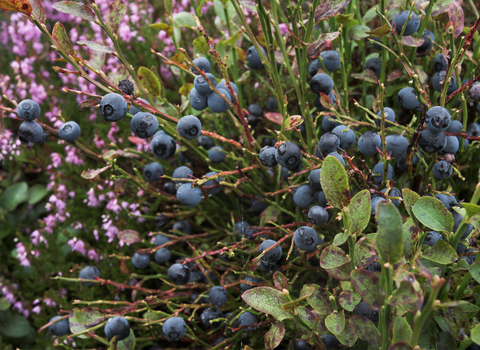
Ben Osbourne
Bilberry
Bilberries appear in summer and early autumn and are often turned into jams, pies and sauces...
Scientific name
Vaccinium myrtillusWhen to see
The best time to find bilberry is during the summer and early autumn months.Species information
Category
Statistics
Height: 45cm+Least concern. Bilberry is a common species, but since 2007, some of the UK plants have suffered with a fungal attack from Phytophthora kernoviae.
